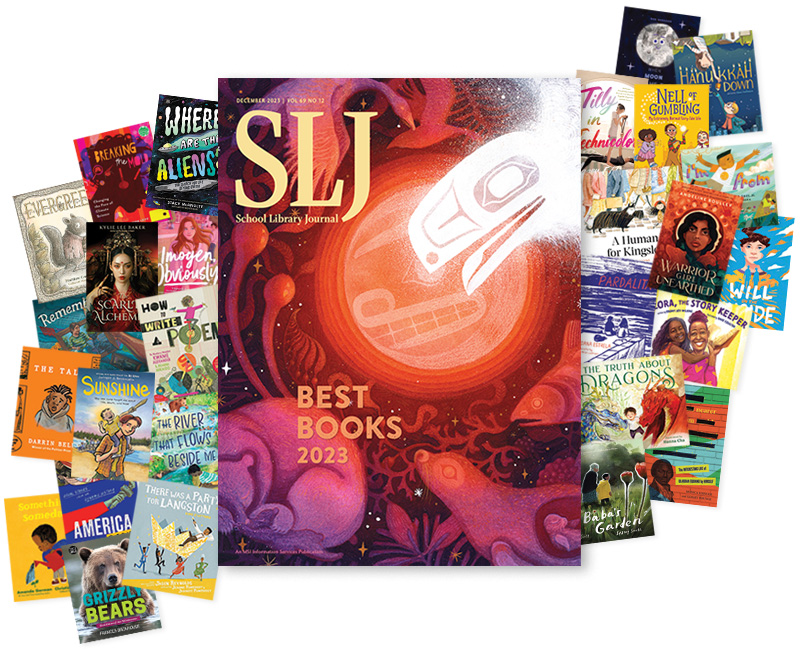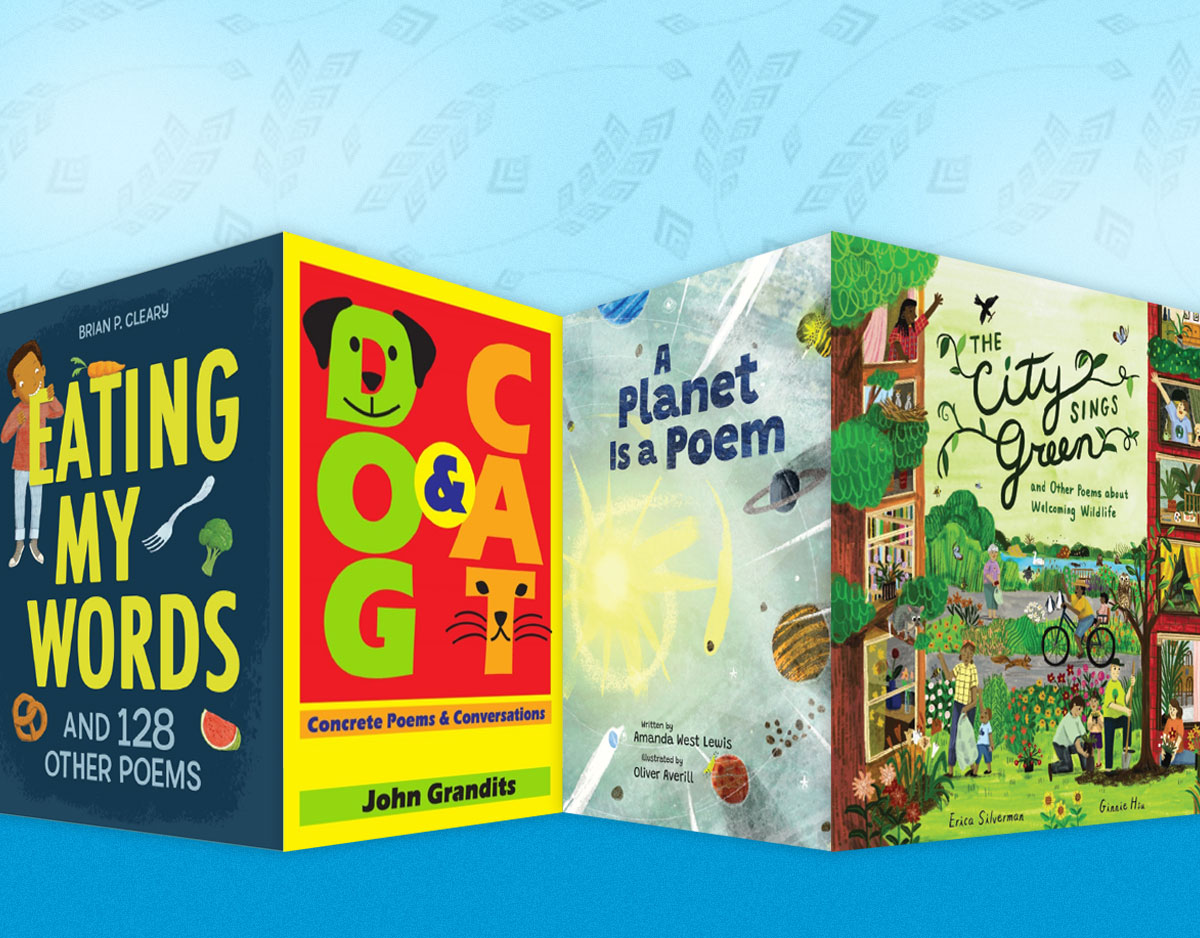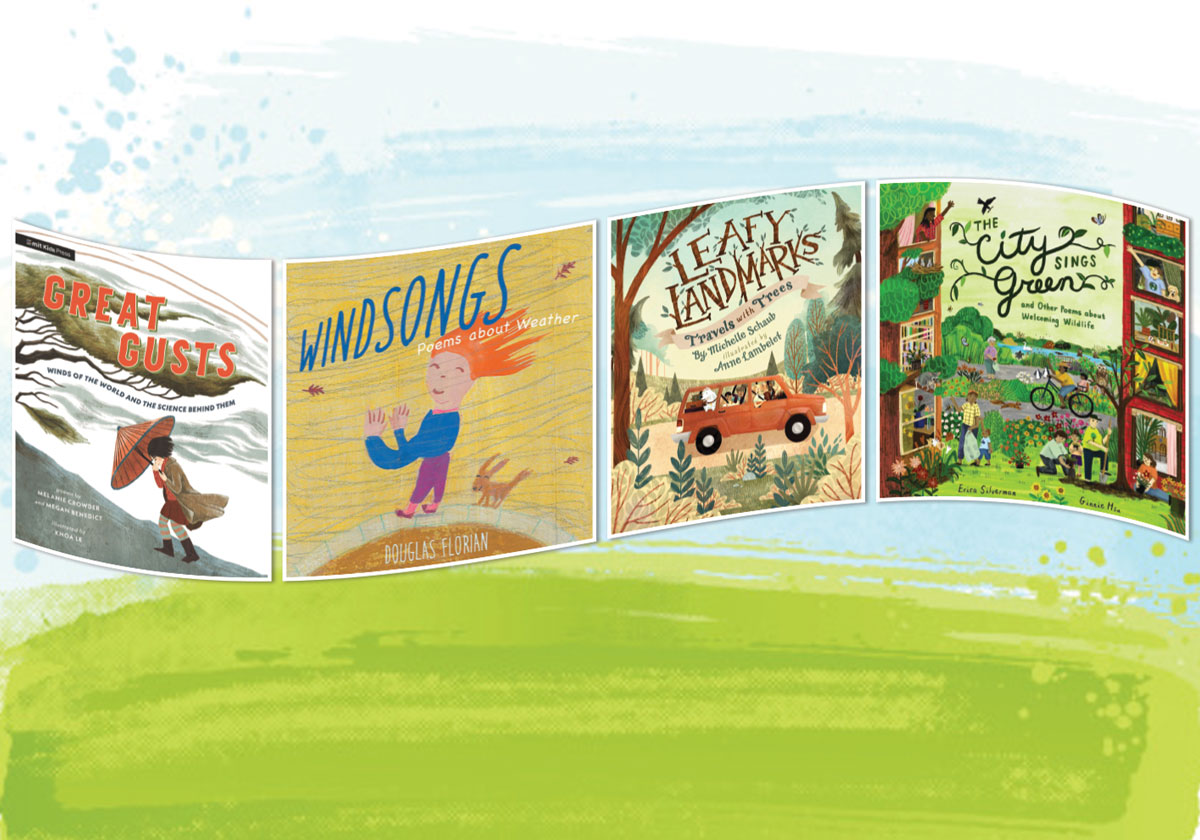The 2021 Sibert Medal Winner, Honeybee: The Busy Life of Apis Mellifera

Honeybee: The Busy Life of Apis Mellifera
Written by Candace Fleming
Illustrated by Eric Rochmann
Published by Neal Porter Books, 2020
ISBN # 978-0823442850
Grades 1 and Up
Book Review
Named the winner of the American Library Association’s 2021 Robert F. Sibert Medal and an honor book for the National Council of English Teachers’ Orbis Pictus Award, Honeybee: The Busy Life of Apis Mellifer documents the experiences of a summer honeybee from birth to death. Candace Fleming’s lyrical prose is perfectly paired with Eric Rohmann’s rich and detailed oil paintings that fill oversized, double page spreads and enlarge the daily lives of honeybees. The combination of words and images invites readers deep into the hive, providing both an intimate encounter with the bee colony and with the 35-day life of a worker bee, aptly named Apis. Immensely satisfying as a picturebook read aloud, this timely and stunning work of nonfiction includes extensive resources for further exploration and back matter that explains how people can help honeybees as colonies collapse worldwide. It is a must-have for readers of all ages.
Teaching Ideas and Invitations
Note to our Readers: These ideas are not meant to be prescriptive. Choose one. Choose more. It’s up to you. Some ideas are bigger and will take a number of days to complete. Some are shorter. You can also choose to complete one part of a teaching idea, but not the whole thing. It’s up to you!
Patience and Anticipation. One of the literary devices that makes Honeybee such an engaging read aloud is Fleming’s anticipatory questioning strategy that sets-up each page turn. Information about the stages of Apis’ life appears at the beginning of each page: “Her wings dry. Her color darkens… Her muscles grow strong.” Spaced below the information follows the question, “For flying?” Repeatedly, the opening of the next page responds, “Not yet…” Invite younger students to talk about their own experiences in having to be patient and complete certain tasks before they can engage in their desired activity. As a parallel to the community-based chores that bees complete in the hive, highlight a set of tasks or routines that contribute to the classroom community and must be completed before the children can engage in activities of their choosing. Pair this discussion with books about patience such as Kevin Henke’s Waiting. To extend the activity, employ Fleming’s same literary device as a mentor text for cultivating anticipation in the creation of a class book and/or individual storyboards or picturebooks.
Sensory Language. Fleming uses descriptive sensory language in her telling about the busy life of Apis mellifera: “Tongues lick. Antennae touch. Bodies clamber and scramble over thin wax comb.” Invite students to dramatize these moments with their own bodies. As part of the process, guide children through a close reading of the text, noting how those language choices enhance the content of the text. Then, encourage students to identify sensory phrases and to describe which of the five senses is highlighted. After, welcome the children to emulate the use of sensory words in their own storytelling and/or writing.
STEAM Connections. Engage young students in the study of bees with a timeless, nationally tested early-childhood unit developed by the educators at the Lawrence Hall of Science on the campus of the University of California, Berkeley. The teaching guide, Buzzing A Hive, offers step-by-step instructions for facilitating hands-on and kinesthetic STEAM learning experiences that help young children to appreciate “the complex social behavior, communication, and hive environment of the honeybee through activities that mix art, literature, role-play, and drama” and that explore the ways wild bees protect their hive from honey-loving animal predators.
Expanding upon the discussion of predators, students may be familiar with the recent news stories about the large hornets that prey on bees. Highlight the role of observant humans in recognizing these predators and notifying experts to help protect local bees.
Life Cycles. In Honeybee, Fleming and Rohmann offer readers a circular story that begins and ends in the same place – deep in the nest where “a brand-new honeybee squirms, pushes, chews through the wax cap of her solitary cell and into… a teeming, trembling flurry [of life].” Pair this picturebook with National Geographic’s time lapse video of a larva’s development into an adult bee and the PBS Nature video, Silence of the Bees: Inside the Hive, which highlights the unique activities of honeybees in and around the hive. In addition to learning about the life cycle of honeybees, invite students to explore the similarities and differences between the life cycles of other insects and animals that emerge from eggs. As a starting point, try some of the titles previously featured by the Classroom Bookshelf such as Loree Griffin Burns’s Handle With Care: An Unusual Butterfly Journey, Caroline Arnold’s Hatching Chicks in Room 6, and April Pulley Sayre’s Being Frog.
See Like a Bee. Bees’ eyes differs significantly from human eyes. Bees have two compound eyes on the sides of their heads and three simple eyes on the tops of their heads. Their compound eyes have thousands of lenses that help them to detect the ultraviolet markers of flowers that lead to the pollen and nectar. The structure and visual features of flowers and plants have evolved to attract bees. Invite students to learn about bees’ eyes and vision as a means to understanding the ways in which to support bee health. For an overview about the differences between animal’s eyes, explore books such as Guillaume Duprat’s Eye Spy: Wild Ways Animals See the World, Steve Jenkins’s Eye to Eye: How Animals See the World, and Brendan Wenzel’s, The All Saw A Cat. For an introduction to the ways in which flowers and plants communicate with bees and other pollinators, introduce books such as Sara Levine’s Flower Talk: How Plants Use Color to Communicate. As an extension, take students on a nature walk to look for bees and/or plants that attract bees such as those outlined in the book’s back matter and online. See the list at the bottom of this entry for additional resources to support children’s learning about bees’ vision. Culminate the activity with a discussion of how bees and humans see plants differently.
Units of Measurement. In summarizing the extraordinary life work of a summertime honeybee, Fleming writes that after 35 days of life, Apis has “flown… five hundred miles in all. She has visited thousands of flowers. She has collected enough nectar to make one-twelfth of a teaspoon of honey.” Invite students to consider the different units of measurement that characterize the accomplishments of a summertime forager bee. For example, chart the duration of a 35-day period on a 12-month calendar. Use math manipulatives or other small objects (e.g., beans, paperclips) to create piles of 1,000. On a map, identify cities, towns, and/or attractions that are a distance of 500 miles away from the school site. Engage students with kitchen measuring spoons to explore the size of teaspoons and to understand the actual volume of 1/12th teaspoon of honey produced by a summertime honeybee. Compare this tiny unit of honey to the massive quantities of work completed by a single honeybee. Extend the activity by inviting students to measure and discuss items that are significant to their lives. For example, consider the number of days until one’s next birthday or the last day of school. Then, introduce and/or reinforce measurement skills that are important in home food preparation.
Vanishing of Bees. In the author’s note, Fleming explains that “one out of every three mouthfuls of food in the American diet is, in some way, a product of honeybee pollination – from fruits to nuts to vegetables.” In other words, the disappearance of bee populations is a serious problem not only for plants that require pollination but also for human life. For an array of activities and environmental justice resources to help children understand the important role of honeybees in the earth’s food production, be sure to visit the Classroom Bookshelf entries for: Joyce Sidman’s Winter Bees & Other Poems of the Cold, Sandra Markle’s The Case of the Vanishing Honeybees: A Scientific Mystery, and Lela Nargi’s The Honeybee Man. Also visit the website of Planet Bee Foundation for additional teaching ideas.
The Sting of Bees and Wasps. Some people are very afraid of being stung by bees and wasps. Some children and adults are allergic and carry epipens. To face one’s fears, it is useful to learn more information about the subject matter and to understand the factors that elevate one’s anxieties. Correspondingly, help children to learn the similarities and differences between bees and wasps and the ways to behave around them. Support students in recognizing the important contributions that each species makes to the ecosystem. Start by pairing Fleming and Rohmann’s Honeybee with Shabazz Larkin’s The Thing about Bees: A Love Letter. Larkin begins his picturebook with the acknowledgement that bees (and wasps) can play at people’s fears because their stings hurt. Nevertheless, he calls on readers to be brave and to learn about the benefits of bees and wasps to help quell their anxieties. His book includes a visual guide that offers a concise introduction to the differences between bees and wasps. Additional information is available in books like Buffy Silverman’s, Can You Tell a Bee from a Wasp? Draw from these books and other resources to help children to determine how best to behave when they encounter varying species of bees and wasps.
We are All Connected. Finally, invite students to engage in a conversation about the connectedness of living beings on Earth from both a science perspective and/or spiritual perspective. Sy Montgomery’s book, Becoming A Good Creature, and the recent adaptation of the PBS television series, All Creatures Great and Small, offer a springboard for recognizing one’s connection to all elements of the universe.
ADDITIONAL RESOURCES
Children’s Books about Bees on Epic!
National Geographic – Honeybees
The Conversation: Bee Eye Camera
Kids Discover: The World Through Animal Eyes
BuzzAboutBees: Why Do Bees Have 5 Eyes?
Filed under: Announcements, Awards, Classroom & Curricular Ideas, Nonfiction Picture Books, Picture Books
About Denise Davila
ADVERTISEMENT
ADVERTISEMENT
SLJ Blog Network
Notes on August 2024
Batchelder Guest Post: Mildred L. Batchelder and the International Youth Library: Part II – “Endless” Correspondence
Graphix to Publish Two Azuki Manga | News
September Suggestions: The Final Round
Navigating the High School and Academic Library Policy Landscape Around Dual Enrollment Students
Take Five: 2024 Middle Grade Books by Minnesota Authors
ADVERTISEMENT






